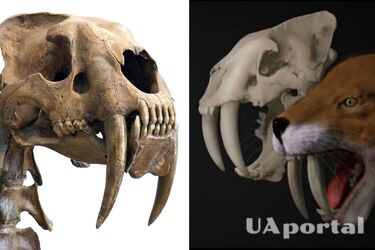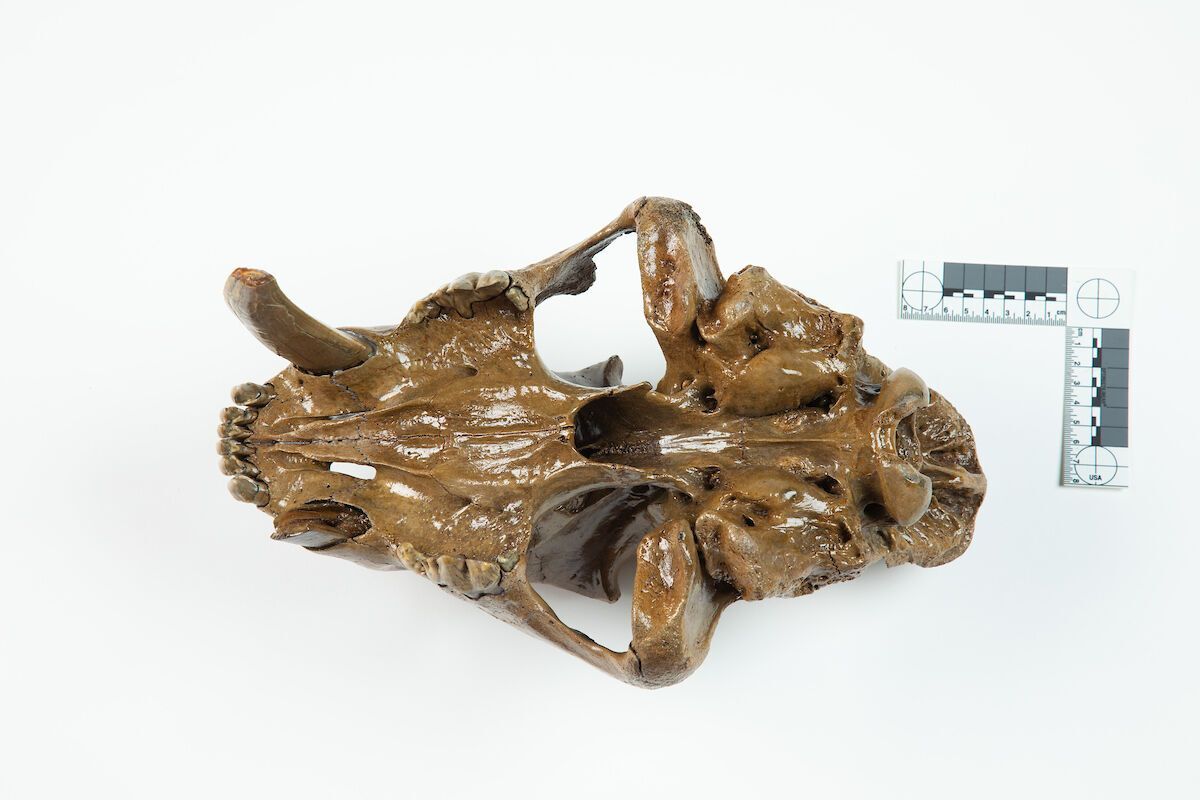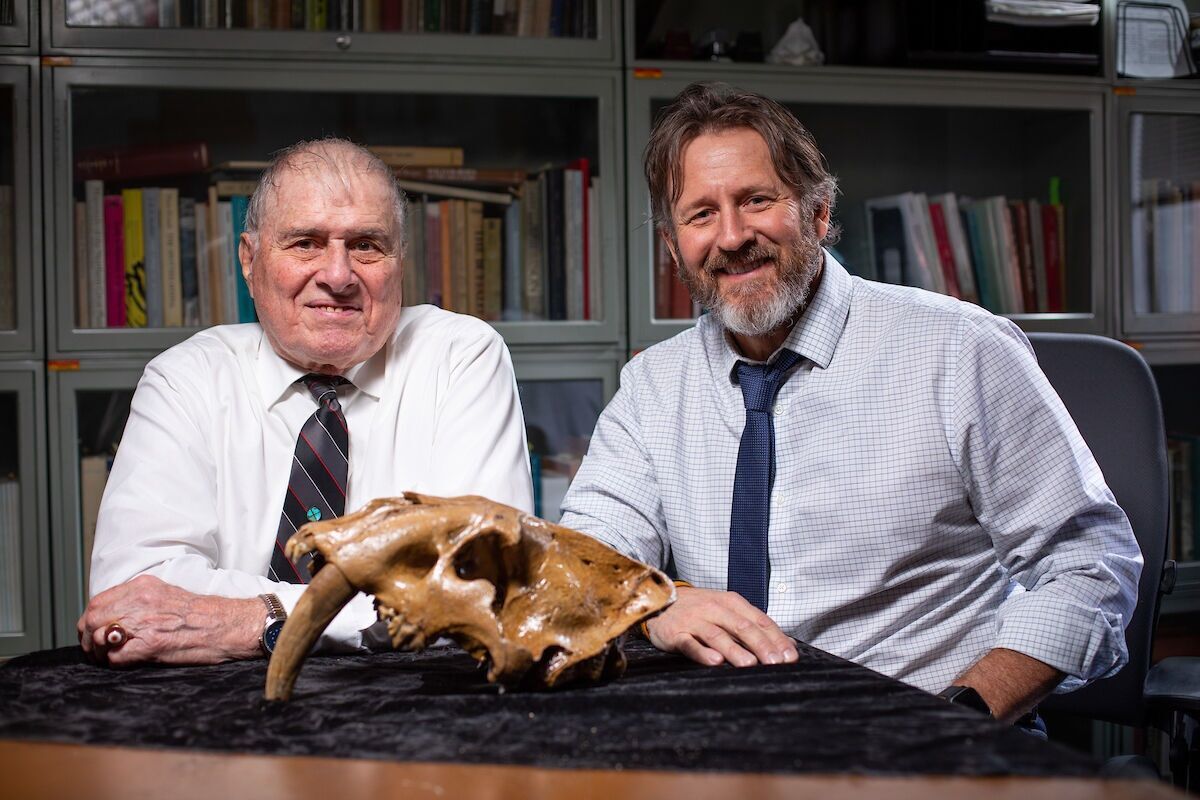First complete skull of a saber-toothed cat found in the United States (video)

The complete fossilized skull of a saber-toothed cat (Smilodon fatalis) was found on the bank of the East Nishnabotna River in southwestern Iowa (USA). These cats became extinct after the glaciers began to melt - more than 13 thousand years ago. So this specimen was one of the last on the continent.
According to The History Blog, previously scientists mostly found only parts of such animals. This is the first time a complete skull of a smilodon has been found.

Matthew Hill, professor of archaeology at Iowa State, commented on the find as follows: "We believe that southwestern Iowa during this period was a parkland with patches of trees interspersed with grassy areas, somewhat similar to central Canada today. The cat would have lived alongside other extinct animals such as the dire wolf, giant short-faced bear, long-nosed peccary, flat-headed peccary, mule deer, musk ox, and giant ground sloth, and possibly a few bison and mammoths."
Read also: The remains of a previously unknown marsupial were discovered in Australia (photo)
Scientists found that the big cat was an immature male aged approximately two to three years at the time of death. Its cranial sutures were not fully formed, and its molars and premolars had not been worn away, indicating that they had emerged recently. "Of course, this young cat was still huge. The researchers estimated that it weighed about 550 pounds, about 100 pounds from its maximum adult size and 150 pounds more than the average African male lion today," the report said.

One of the cat's long fangs was broken on its skull, and a small amount of scuff marks on its remaining shin indicate that the creature died no later than a few days after it was injured. The saber-toothed cat's injury probably killed it.
Prof. Hill suspects that the cat's main prey was the giant Jeffersonian ground sloth, which was common in Iowa during the Ice Age. They would perch near trees and bushes and tear off leaves and buds to eat. Standing 8 to 10 feet tall and weighing more than 2,200 pounds, the giant ground sloths were enormous. Hill believes that only a large predator armed with "absolutely lethal jaws and claws" and legs designed to throw could have hunted them regularly.
Earlier archaeologists excavated a Mayan tomb near Palenque in Chiapas. The tomb is built of stone slabs in a style that has not been found in Palenque before.
If you want to receive the latest news about the war and events in Ukraine, subscribe to our Telegram channel!
